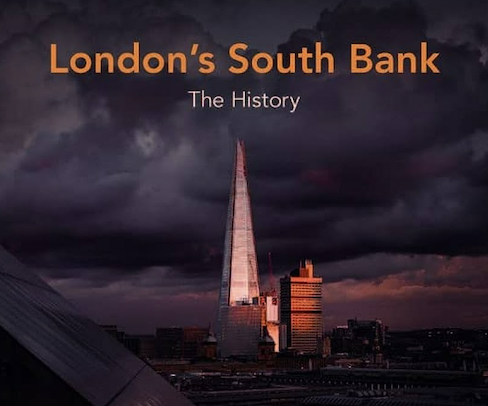Post
BOOK REVIEW | London’s South Bank: The History
2 Aug 2023
By: Mireille Galinou
Reviewed by: Christina Westwood
To explore the history of one of the most vibrant parts of London over five hundred years is no mean feat. It is an endeavour that art and urban historian Mireille Galinou takes on skilfully and elegantly in her unique book London’s South Bank: The History (Your London Publishing, 2023). Over more than 500 pages, the area that stretches from Bermondsey to Vauxhall is brought vividly to life through historical insights, eye witness accounts, and pictorial evidence reproduced with generous permission by the London Metropolitan Archives, the British Museum, Lambeth Palace Library and other institutions.
Join today and get priority booking here at The London Society
The chapterisation of this mighty tome is unique and sets the course for the idiosyncratic discoveries that are to come: Chapter 1 is in essence a prologue that sets out the author’s vision. This vision encompasses ‘a quest for London’s soul’ that must be harboured by the South Bank, ‘London’s centre of gravity’. Chapter 2, titled The Eye of London, commences with an introduction to Anthony Gormley’s life-sized casts on the South Bank before returning to the sixteenth century and tracing the continuous efforts by rulers and citizens throughout the ages to establish the area as a centre for trade and conviviality. To do so, the chapter draws on a plethora of carefully selected pictorial evidence and ephemera that will delight even the most demanding reader. If the lens of this chapter is artistic, then Chapter 3 – The Sweep of History - most definitely has an urban-architectural focus. This chapter takes as its starting point the Romans’ sustained campaign to protect Southwark from flooding and contrasts the area’s built environment at four distinct points in history: 1600, 1770, 1845 and the cusp of the twenty-first century. Equally appealing to the interested reader who loves London are the ensuing chapters titled The ‘Quest’ – Soul Searching in the South Bank’s Neighbourhoods and Answers to the Quest. These chapters peel back the strata of natural and built geographies to portray the human life that shaped Vauxhall and Lambeth, Waterloo, Borough and Bankside, Southwark and Bermondsey throughout the ages. It is to Galinou’s credit that she devotes much effort to capturing the voices of what she terms ‘saints and sinners’, to allow the voices of the deprived and dispossessed to be heard as clearly as those of the wealthy and respected. This makes for a particularly warm and vivid portrayal of human life that is often lacking in historical volumes but remains essential to tell the whole story.
Careful exploration of all that London’s South Bank: The History offers through its five chapters makes it clear that Galinou’s quest and that of her readers, will continue for as long as progressive generations continue to shape the industrial, cultural and human heart that beats south of the Thames. This book is for anyone who is interested in connecting with history, urban matters, and artistic culture to reveal how ordinary citizens leave imprints on metropolitan memory, and how the past influences the future in myriad human ways. It is a book to dip into frequently and open-mindedly for fresh insights that allow an appreciation of the continued narrative of this beguiling fluvial part of London.
